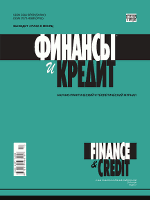Abstracting and IndexingРИНЦReferativny Zhurnal VINITI RAS Worldcat LCCN Permalink Google Scholar Online availableEastvieweLIBRARY.RU Biblioclub |
Pawnshops as a tool to develop consumer lending of population in a region
Available online: 23 November 2014 Subject Heading: CONSUMER LENDING JEL Classification: Pages: 25-30
Nowadays the specific features of the Russian economy are low development of the market of various credits and financial services, the lack of coordination of credit cooperatives, associations and partnerships of mutual lending. In these conditions, the role of pawnshops is growing significantly. Pawnshops serve as main creditors of citizens, support and increase their solvency. This encourages aggregate demand in the economy and serves as an additional impulse of the national economy development. Therefore, to improve credit relations with citizens in the State and regions it is necessary to create a wide network of pawnshops and a respective pawnshop infrastructure. The authors emphasize that a modern pawnshop is a specialized commercial organization, which primary activities are granting short-term loans secured by personal movable property of borrowers and keeping borrowers' personal belongings in save custody. Federal laws regulate the activity of pawnshops in the territory of the Russian Federation. Pawnshops are not banking institutions. They are microfinance organizations, and their operations are under control of the Federal Financial Monitoring Service. The specific feature of lending operations through a pawnshop is non-availability of a loan agreement with borrowers and a pledge agreement. The authors have considered the activity of pawnshops as a tool to develop consumer lending in a region, analyzed the main indicators of their operations and dynamics of their development in the Russian Federation. The study includes the analysis of consumer preferences while using pawnshop services based on the region's lending market research and offers the ways to increase this tool's efficiency. Keywords: pawnshop, lombard, infrastructure, consumer lending, regional market, banking services, regional banks, credit, parabanking system References:
|
ISSN 2311-8709 (Online)
|
|








